By Major General Michael Reynolds
In mid-March 1945, the Joseph Stalin’s Soviet Red Army launched a major offensive with the aim of clearing Axis forces out of Hungary and forcing them back to the very borders of Hitler’s Greater German Reich. It was successful, and at 1925 hours on the 29th a “Führer Decision” finally arrived at the headquarters of Army Group South authorizing a phased withdrawal to what was called the Reichsschutzstellung—the Reich Guard Position.
This position followed the approximate line of Austria’s eastern border. Four days later, on April 2, Waffen SS General Sepp Dietrich, the commander of the Sixth Panzer Army, was presented to the people of Vienna as their “defender,” and over the next two days a number of his battered formations, notably the 2nd SS Panzer Division Das Reich, pulled back in chaotic conditions toward what had inevitably been designated Fortress Vienna. The withdrawal was complicated by roads jammed with miscellaneous German and Hungarian troops and hordes of civilians—all desperately trying to reach what they thought might be a place of safety.
Stalin’s Soviet Red Army Pushes Toward the Danube
By April 4, Das Reich, with a Kampfgruppe (battlegroup) from the 3rd SS Totenkopf Division on its left flank in the area of the Vienna airport, had been forced back to a line running roughly between the villages of Mödling and Achau. There it was tasked with preventing a Soviet advance along the main roads leading into Vienna from Wiener Neustadt and Sopron. But it was now clear that the Soviets were also beginning to push northwest toward the Danube River valley in the area of Tulln with the intention of outflanking and isolating the Austrian capital. Das Reich’s commander, SS Colonel Rudolf Lehmann, had little option other than to prepare to withdraw his Kampfgruppen into the city itself.
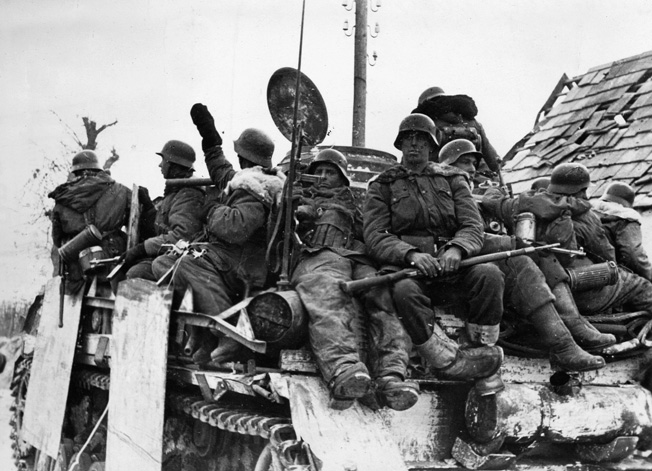
soldiers ride atop a Panzer IV during the long retreat to the Fatherland in January 1945.
That same day, General Rudolf von Bünau was appointed commandant of the city of Vienna, and 24 hours later Lehmann received an order said to have come from the Führer himself, which ended: “From now on there is to be no more retreating.” By this time, however, his men, despite intense fighting, had been forced back some two and a half miles across flat, open ground to a low ridge running from Vösendorf to Leopoldsdorf. There they occupied temporary positions on a reverse slope.
Losses in Numbers, Rather Than Names
Some extraordinary events had occurred during the withdrawal toward and into Vienna. Some 2,800 men intended for the 12th SS Panzer Division Hitlerjugend but unable to reach that division had been quickly absorbed into Das Reich, and a reinforcement unit made up of convalescents, leave personnel, and replacement troops was quite literally taken off trains passing through Vienna and found itself in action under Lehmann’s command in the Piesting River sector.
In the same way, individual replacements arriving on April 3 had been quickly integrated, but according to SS Lt. Col. Otto Weidinger, the commander of the Division’s 4th SS Panzergrenadier Regiment Der Führer, it was no longer possible even to take down the names of these men. Losses were being recorded in numbers rather than names. He also recorded that just before the final withdrawal into the city most of Das Reich’s artillery was intact, but that the panzergrenadier regiments amounted to only “five average battalions” and the division had only 60 percent of its authorized motor transport.
Further Withdrawal to the High Ground
At 2000 hours on April 5, Lehmann gave orders for a further withdrawal to the high ground behind the Liesing River, running from Mauer through Altmannsdorf to the area of Inzersdorf. This new position was within the city limits of Vienna itself, and soon after occupying it the men, and particularly the officers of the division, began to run into new problems.
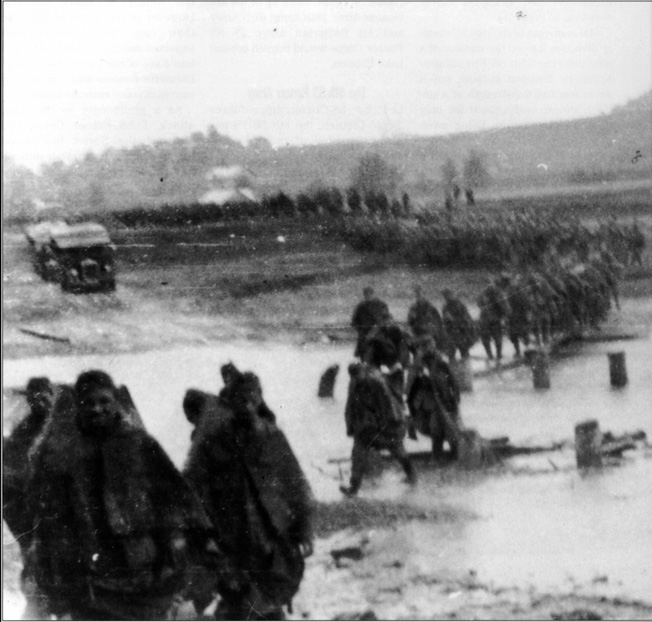
SS Captain Franz-Josef Dreike, the commander of the 2nd SS Flak Battalion, said later that for the first time in the war he experienced a local Germanic population that was unfriendly and even treated his men with contempt and scorn. He found himself getting into arguments with the commanders of the local Viennese defense sectors over responsibilities and rank. He also described how the personnel of a fixed 88mm Luftwaffe flak battery joined him and stayed with his battalion right to the end, displaying great bravery and apparently proud of the fact that they were suddenly part of the Waffen SS. Dreike was to receive a Knight’s Cross for his leadership at this time.
The Soviets Launch Their Major Assault
At 0730 hours on April 6, the Soviets launched a major assault on the German positions. It has been said that this attack was due to coincide with an attempt by the Austrian resistance movement to hand over the city to the Soviets. In any event, the attempt failed. The leaders of the movement had clearly not calculated on the presence of the men of the Waffen SS.
During the 6th, Das Reich’s 2nd SS Reconnaissance Battalion, under the command of Major Ernst Krag, pulled back through the division’s lines to the area around the Floridsdorf Bridge across the Danube. This vital bridge, which was to become the focus of the fighting in the last hours of the battle for Vienna, was already under observation from Soviet troops on the Kahlenberg feature in the northwestern part of the city.
By the evening of the 6th, Das Reich, which was no longer fighting as a division but in small-unit groups, had been forced back to a line just south of the Schönbrunn Palace and extending west to the Hietzing sector of the city. Some of its tanks and certainly the 10th SS Heavy Battery had taken up positions in the palace grounds. Another battery, the 12th, was in position on Prater Island between the Danube and the Danube canal. One of the 10th Battery officers later described how they were shooting directly over the gloriette toward the south and how one gun was positioned in the middle of the three main entrances to the palace grounds, firing toward the palace bridge to the north. He claimed the palace suffered only slight damage to the east side of the gloriette.
“[They] Want to Turn Vienna Into a Battlefield Just as They Did Budapest
As darkness fell on the 6th and the Russians began to threaten Prater Island from the southeast, General von Bünau, who although still city commandant had been placed under the command of SS Lt. Gen. Willi Bittrich’s II SS Panzer Corps that included Das Reich, the 3rd Totenkopf, and the 6th Panzer Divisions, gave orders for the bridges across the Danube in the eastern part of Vienna to be blown. The same night saw the enemy trying to infiltrate toward the West Station, but the deployment of a battalion of Hitlerjugend (youngsters, but not part of the Waffen SS or the 12th SS Panzer Division Hitlerjugend) put a temporary end to this threat. Nevertheless, by midnight parts of Weidinger’s Der Führer Regiment had been pushed back into the streets just to the north of the Schönbrunn Palace.
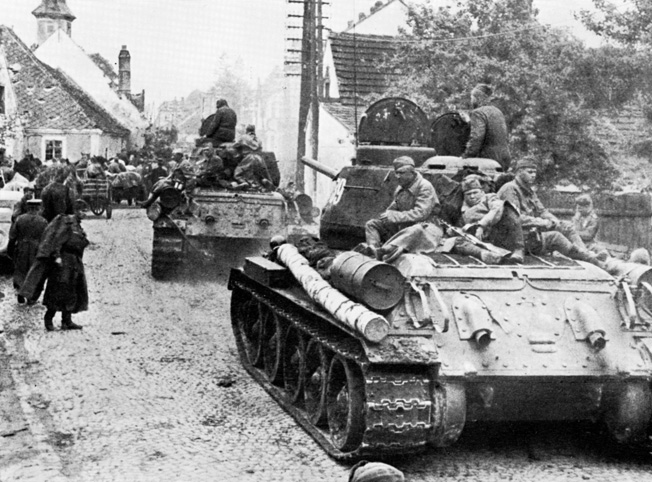
During the 6th, the commander of the Third Ukrainian Front, Russian Marshal Fyodor Tolbukhin, arranged for a message to be broadcast to the local population: “The retreating German troops want to turn Vienna into a battlefield just as they did Budapest. Vienna and its inhabitants are under the threat of similar destruction and terror as was handed out there. Citizens of Vienna—help the Red Army to liberate the capital of Austria; play your part in liberating your country from the Fascist German yoke!”
Civilians Supporting the Russians
How much effect this broadcast had is unknown, but German morale was certainly not improved when it was learned from civilians and prisoners that in the sectors of the city already occupied by the Russians men and women with red and white armbands were helping Soviet soldiers by carrying ammunition and equipment.
By the morning of April 7, there was no longer a German front line in Vienna. Units defended positions considered by their officers to be tactically important, but they were often cut off from each other by Soviet troops. By the end of the day, Lehmann’s men had lost the West Station and withdrawn into the areas known as Maria- hilf and Neubau, and Krag’s 2nd SS Reconnaissance Battalion had pulled back across the Danube to the Floridsdorf district.
The Destruction of the Canal Bridges
In one of the more extraordinary stories of this day, SS Senior Sergeant Major Ernst Barkmann related later how former prisoners of war—French, Belgians, Dutch, and Slavs—were celebrating with accordions and guitars playing in some of the local cafés and wine bars and waiting for the war to end. There were even a few local people and German soldiers among them. He went on to point out that just a few hundred meters away, where the Soviets had broken through, men were dying.
The important and famous Grinzing region of Vienna, only two and a half miles from the Floridsdorf Bridge, also fell to the Soviets on the 7th, threatening all the Germans west of the Danube canal with encirclement. This led Lehmann to order the destruction of all the canal bridges except the Augarten and Aspern.
According to German Army Group South’s morning report, Bittrich’s II SS Panzer Corps destroyed 39 Soviet tanks in Vienna on April 8. There are no details of fighting on this day, other than the fact that Rudolf Lehmann, after being wounded in the hand while on reconnaissance, set up an advanced command post near the Augarten Bridge.
“Enormous Sacks of Plundered Goods”
It appears that each day with the coming of darkness most of the fighting ceased and a deathly silence hung over the city. The center was apparently a sea of flames, and Lehmann reported seeing looters dragging “enormous sacks of plundered goods” along the streets.
By April 9, the German positions west of the Danube canal were no longer tenable. Das Reich was fighting in a rough semicircle extending from the vicinity of the North Bridge to just beyond the Aspern Bridge. Elements of three Soviet rifle divisions and the I Guards Mechanized Corps (equivalent to a German panzer division) were attacking from the southeast toward the Prater, two rifle divisions and a Guards mechanized corps from the south and west moved toward the Aspern and Augarten Bridges, and a Guards tank corps was closing in toward the Floridsdorf Bridge from the northwest.
Sealing the German Escape Routes
Furthermore, Marshal Rodion Malinovsky’s 46th Soviet Army, having crossed to the east bank of the Danube with two rifle corps and a Guards mechanized corps, was attacking northwest and west with the aim of sealing the escape routes of the Germans defending the city. It has to be pointed out, however, that none of the formations mentioned was anywhere near peak strength, and by this stage of the war the Soviet supreme command was acutely aware of the Red Army’s cumulative casualty figures. With Poland, Slovakia, Hungary, and Rumania already occupied by Soviet troops and the desired buffer zone between the western border of the Motherland and the fascist and capitalist enemies firmly established, there seemed little point in needlessly sacrificing more lives.
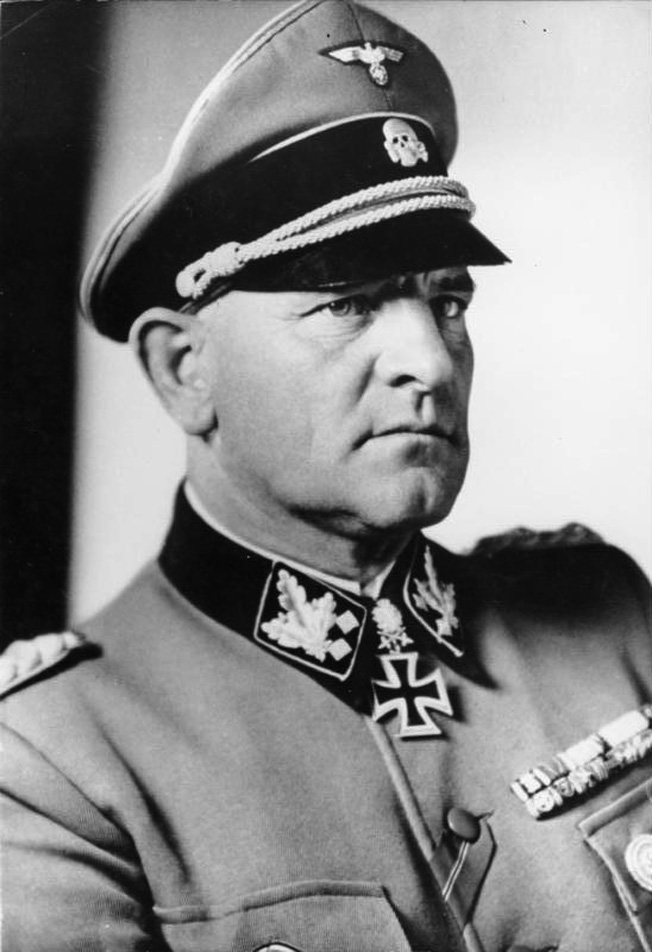
In view of the rapidly deteriorating situation, and in spite of the Führer Order forbidding further retreat, Dietrich’s Sixth Panzer Army headquarters gave permission for II SS Panzer Corps to pull back across the Danube canal during the night of the 9th and blow the remaining bridges. In true Waffen SS fashion and contrary to the normal tactics of the American and British Armies, tanks, armored assault guns, and artillery pieces rather than infantry covered the final withdrawal.
The guns of the 2nd SS Artillery Regiment went into direct firing positions at various intersections to seal off the streets. Their commander, SS Colonel Karl Kreutz, received oak leaves to his Knight’s Cross for the achievements of his artillerymen and for his own leadership of both his regiment and the Das Reich Division during the Battle of Vienna.
All Bridges Blown
By first light on April 10, all the bridges over the Danube and its canal except the Reichs and Floridsdorf had been blown. General von Bünau had been the last man to cross the Aspern Bridge. Das Reich was now behind the canal in the area of the Floridsdorf Bridge with the 4th SS Panzergrenadier Regiment Der Führer on the right and the 3rd SS Panzergrenadier Regiment Deutschland on the left. Each regiment deployed two of its weak battalions forward and kept one in reserve.
The remnants of the Totenkopf Division and the 6th Panzer Division were on the division’s left flank, and Bitttrich’s advance headquarters was now located on the east bank of the Danube near the Reichs Bridge. Casualties continued to mount during the withdrawal and included SS Captain Richard Engelmann, commander of the 1st/4th SS Panzergrenadier Battalion, who was killed with his whole crew when his command vehicle was shot up by a Russian tank on the south bank of the river. The armored strength of Das Reich on this day was 15 Panthers, 11 Mark IVs, four Jagdpanzer IVs, one Jagdpanzer V, and eight Flakpanzer IVs.
The German front on Prater Island held throughout the 11th, but on the 12th the Soviets made a major incursion in the area of the Augarten canal bridge forcing the Germans back into two small perimeters—Das Reich’s encompassing the Northwest Station area and the Floridsdorf Bridge, and the Totenkopf’s and the 6th Panzer Division’s North Station and Reichs Bridge.
Preserving the Reichs Bridge
At 2315 hours on April 12, Bittrich, in what could be described as a convenient move, handed over command of all troops west of the Danube to General von Bünau. At the same time Das Reich’s remaining armor was ordered back across the river and the remaining elements of the Totenkopf and 6th Panzer Divisions were withdrawn, or more probably forced back, to the east bank. This latter withdrawal resulted in the Reichs Bridge falling into Soviet hands intact. The cause of this error is unknown, but it has been alleged that it was due to a Führer Order expressly forbidding its demolition. In any event, the surviving structure was covered with some antitank guns and at least six 37mm flak guns.
Das Reich was thus left holding the Floridsdorf Bridge perimeter in isolation and with an open left flank. Not surprisingly, it soon found itself having to abandon the area of the Northwest Station and withdraw on von Bünau’s orders into a close bridge garrison with a radius of only some 700 meters. Von Bünau saw the futility of holding on but knew that a further general withdrawal in daylight was out of the question since the bridge was under direct fire from Russian tanks and machine guns.
A Desperate Position for German Command
According to Otto Weidinger, commander of 4th SS Panzergrenadier Regiment, he was also influenced by an April 12 directive from the supreme headquarters of the German armed forces (OKW), signed by Field Marshal Wilhelm Keitel, commander of OKW; SS chief Heinrich Himmler; and Martin Bormann, Hitler’s personal secretary, which demanded that important communication centers be defended to the bitter end. The appointed commandant was to be personally responsible for carrying out this order, and if any of them failed in or acted in defiance of their duties they would be sentenced to death.
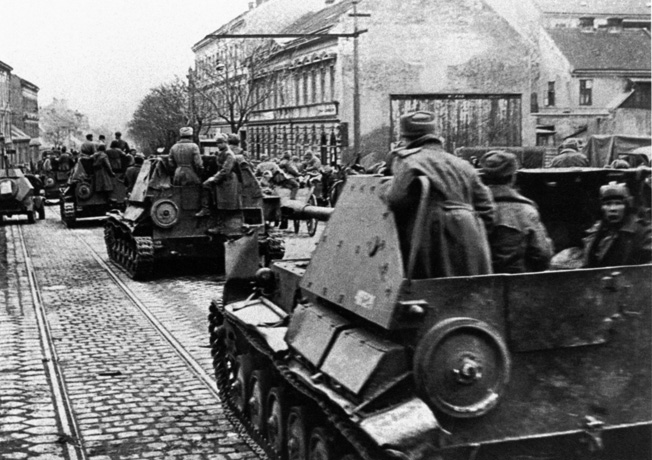
This last day in the battle for Vienna found Rudolf Lehmann, the commander of Das Reich, together with his chief operations officer, still in the tiny Floridsdorf bridgehead but with the main divisional headquarters back on the east side of the river. Von Bünau was also in the bridgehead, still refusing to give up and moving among the men in a simple forage cap with a stick grenade tucked in his belt.
Lehmann called for all the available heavy weapons on the east side of the river, including an army 88mm flak battery, to keep up a wall of protective fire in front of his positions and for tanks to come forward again into the perimeter. An attempt by three Panther tanks of the 6th SS Panzer Company to do so was abandoned after the leading tank, commanded by SS Lieutenant Karl Heinz Boska, the company commander, was hit and set on fire.
The Battle of Vienna Comes to an End
Around midday von Bünau sent his operations officer to brief the Sixth Army commander, Sepp Dietrich, personally on the desperate situation in the bridgehead. Shortly after this, Lehmann was wounded in the knee by a shell splinter and evacuated to the east bank. Not for the first time, SS Colonel Kreutz took temporary command of Das Reich. Fifty-six men, too severely wounded to be evacuated without ambulances, were already sheltering under the arches of the bridge.
The operations officer returned from Sixth Panzer Army headquarters at around 1600 hours with the news that Dietrich had sanctioned a withdrawal. Von Bünau finally acquiesced and gave orders for it to begin as soon as possible after last light. Fortunately, as on the previous nights, the Soviet attacks ceased with the coming darkness, and in almost total silence all the wounded were evacuated. Von Bünau and the last grenadiers of the SS 3rd/4th Battalion pulled back across the bridge at about midnight. Shortly afterward, the order was given to blow it. The battle of Vienna was over.
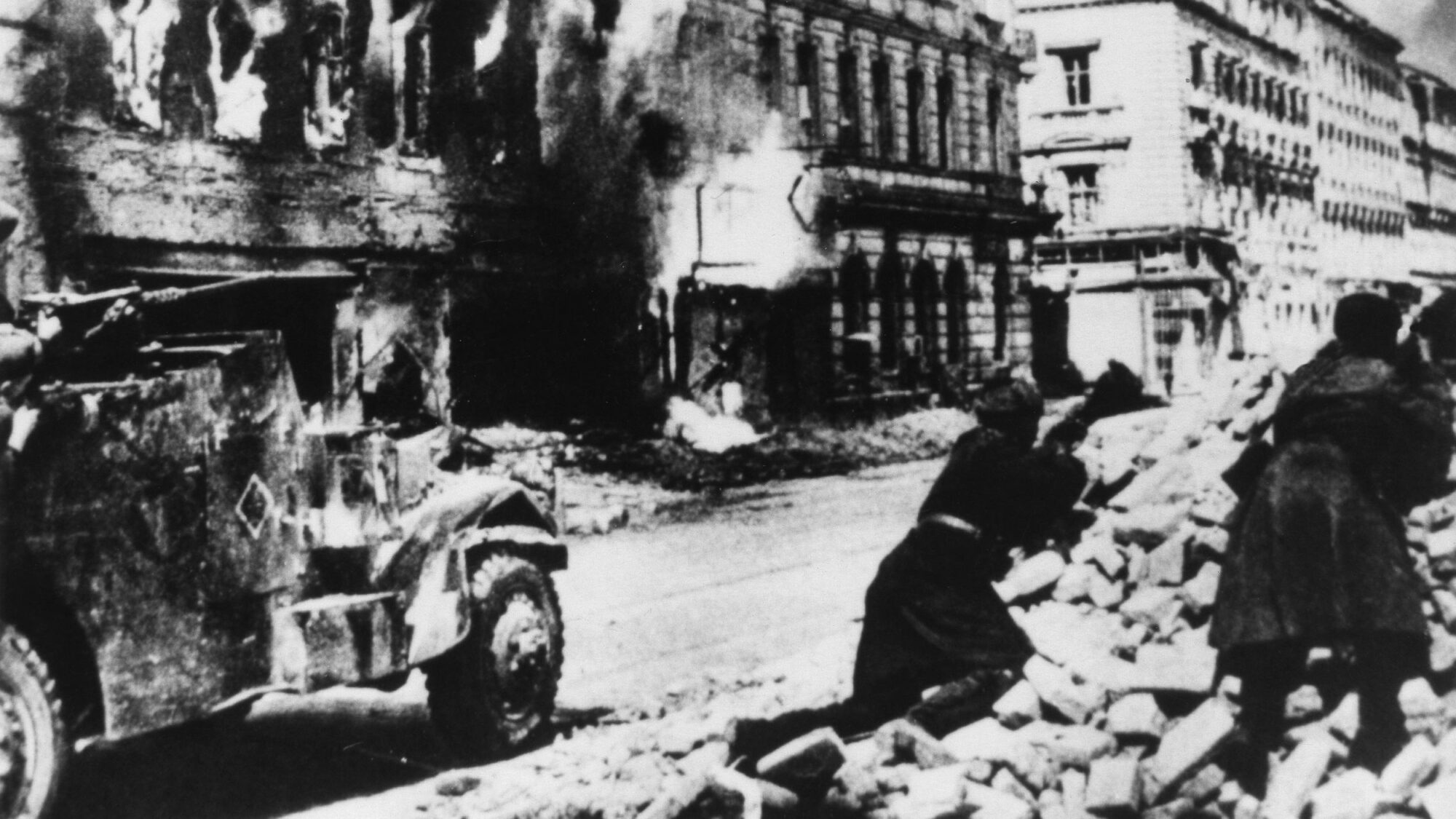
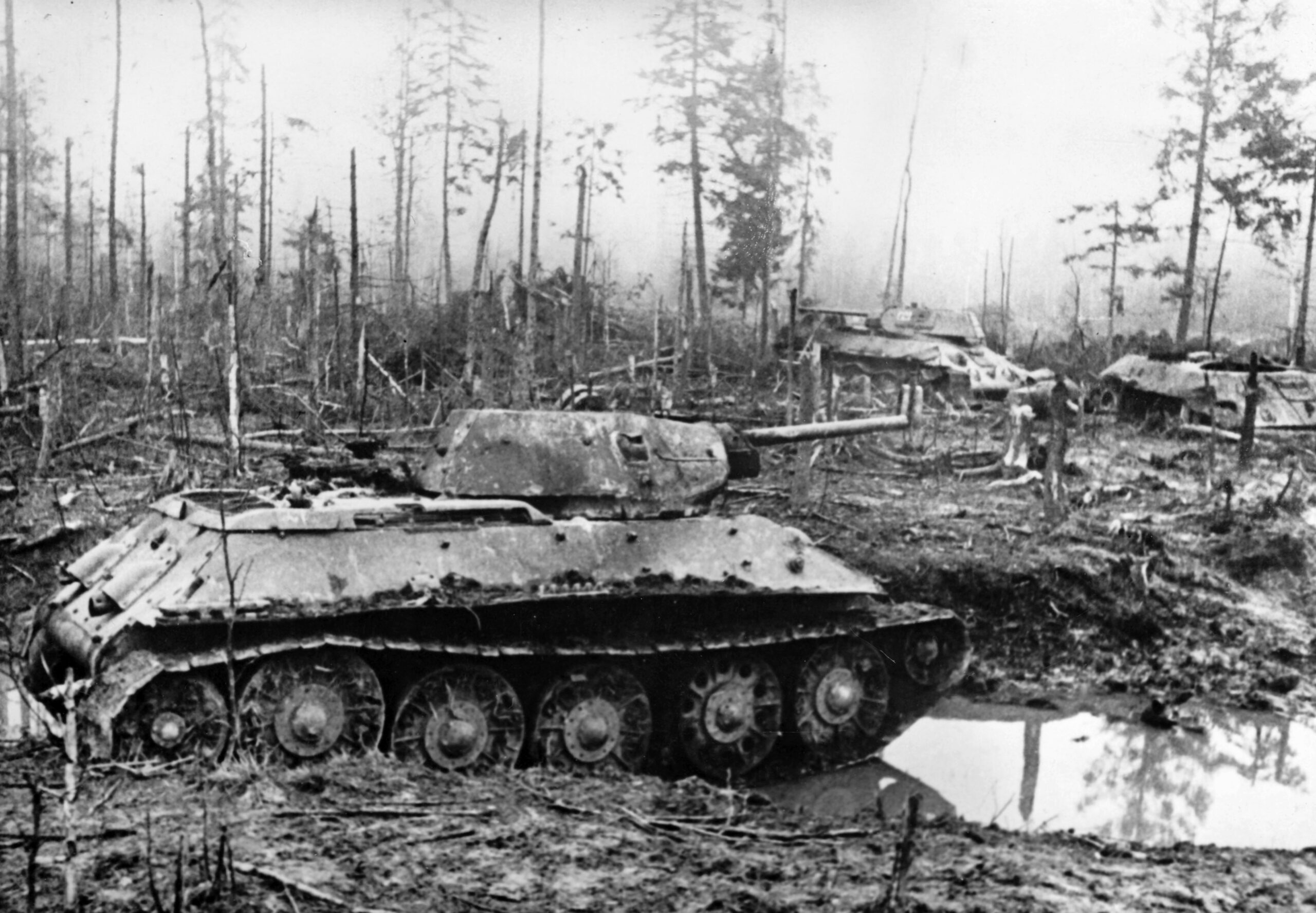
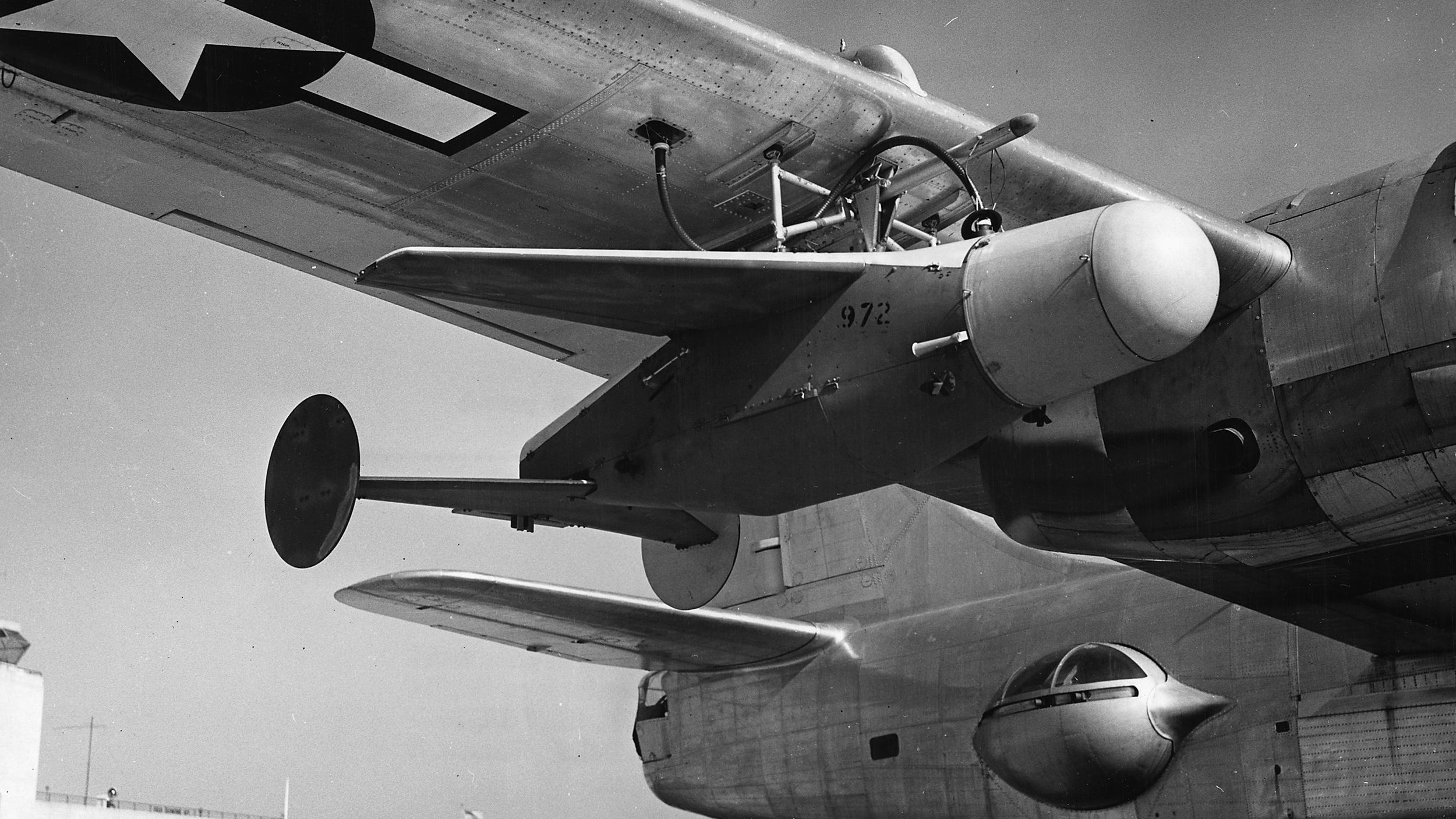
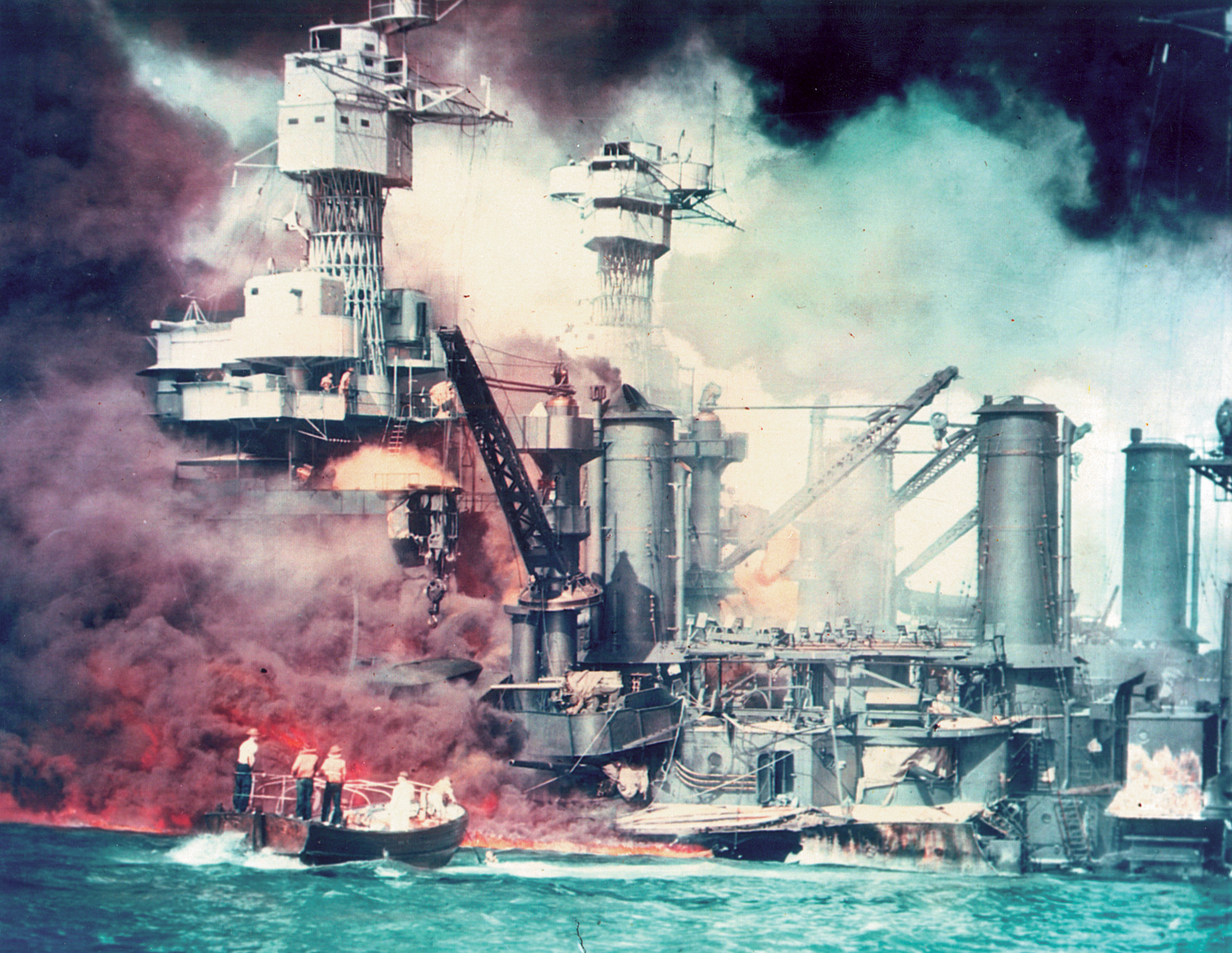
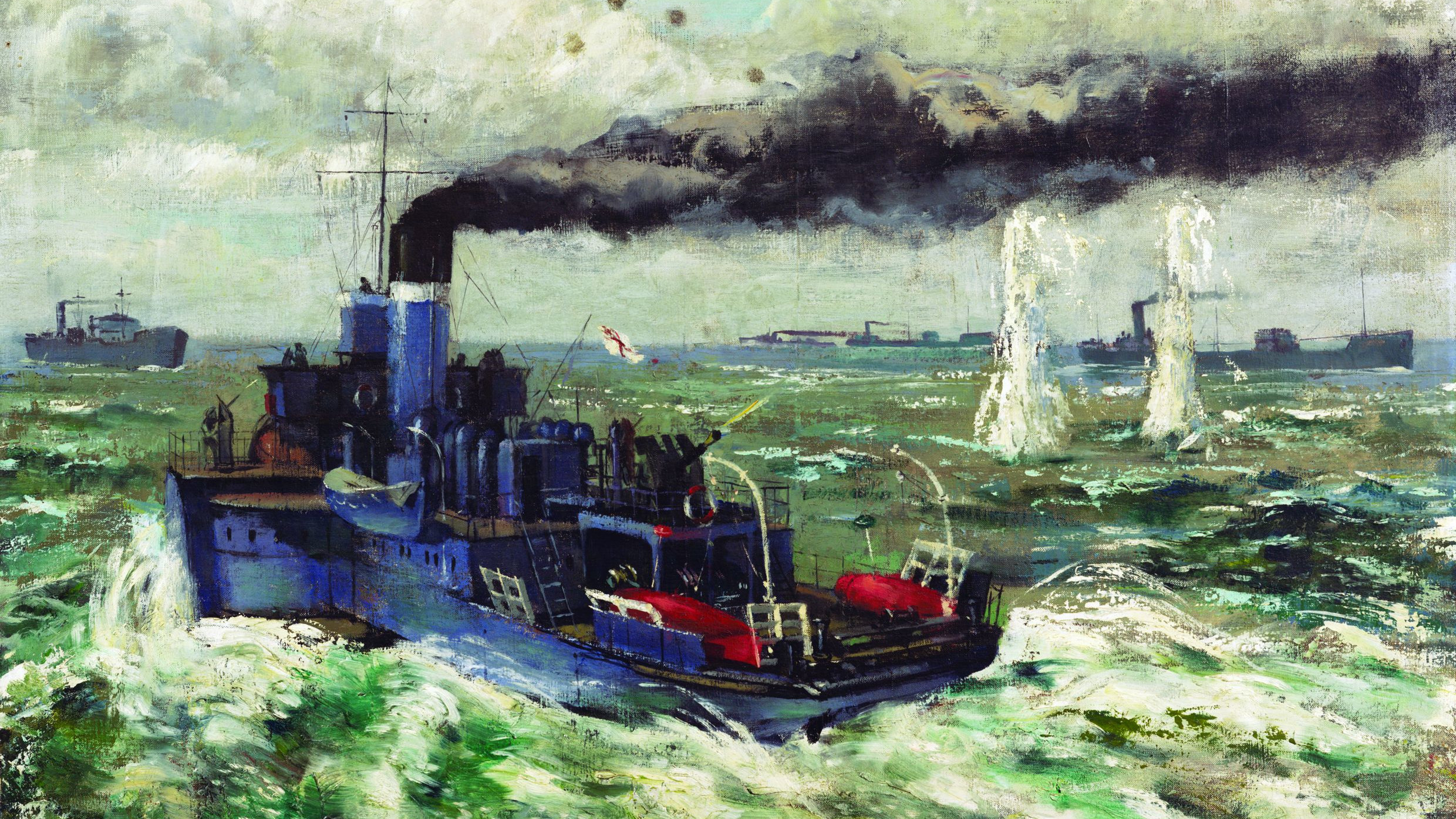

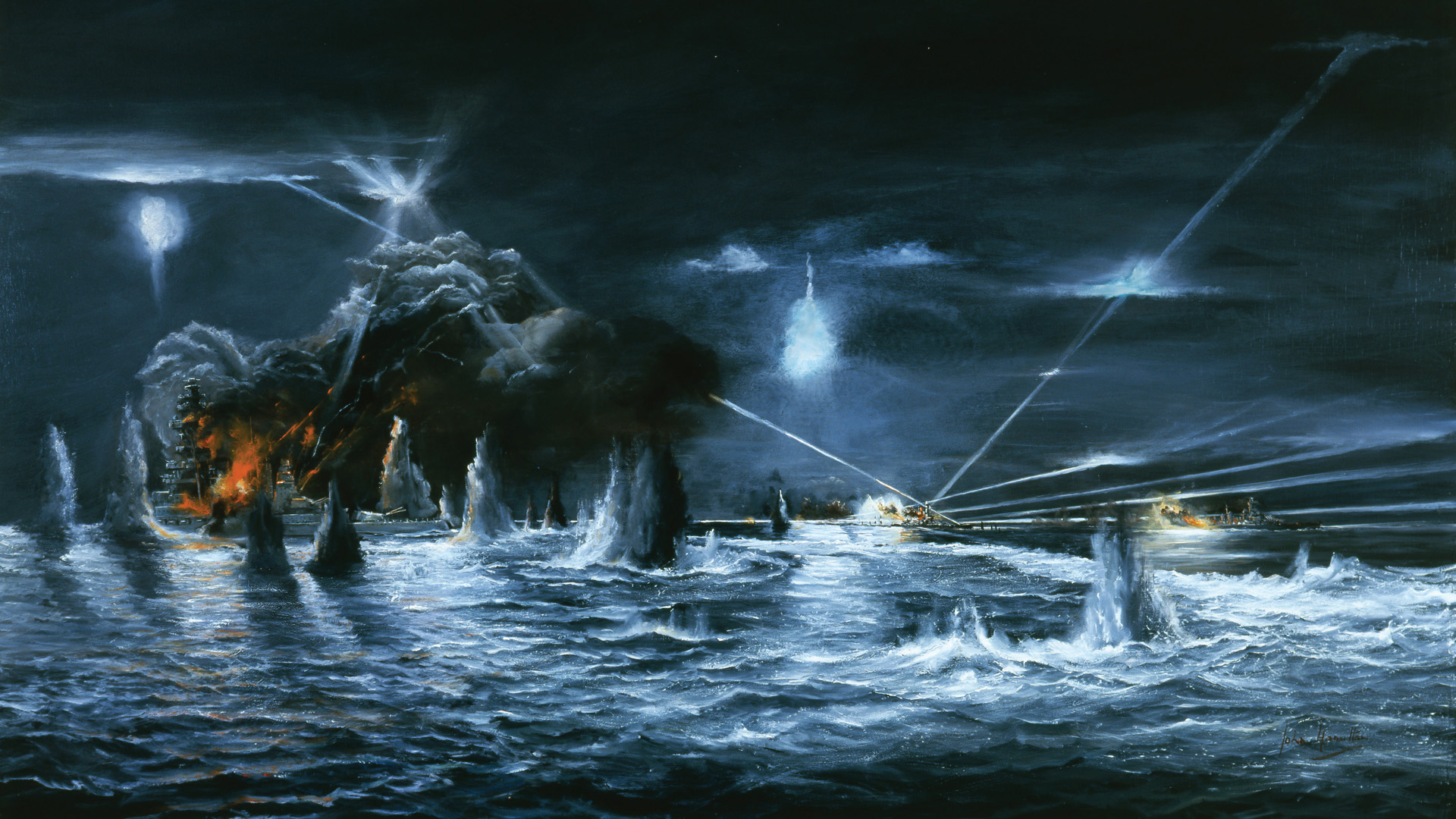
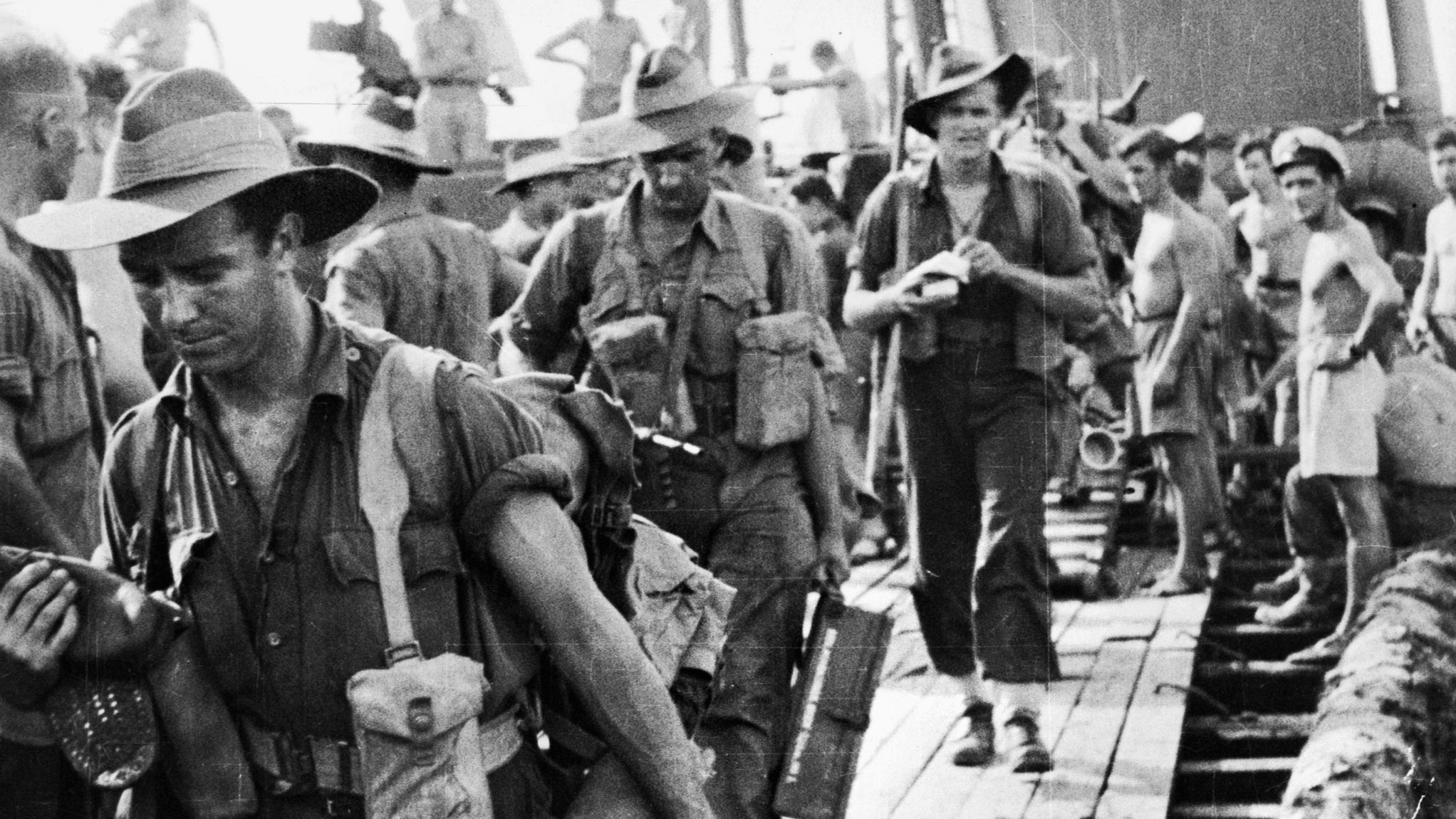
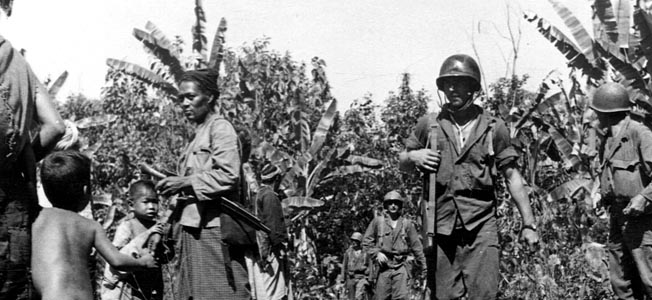
Join The Conversation
Comments
View All Comments